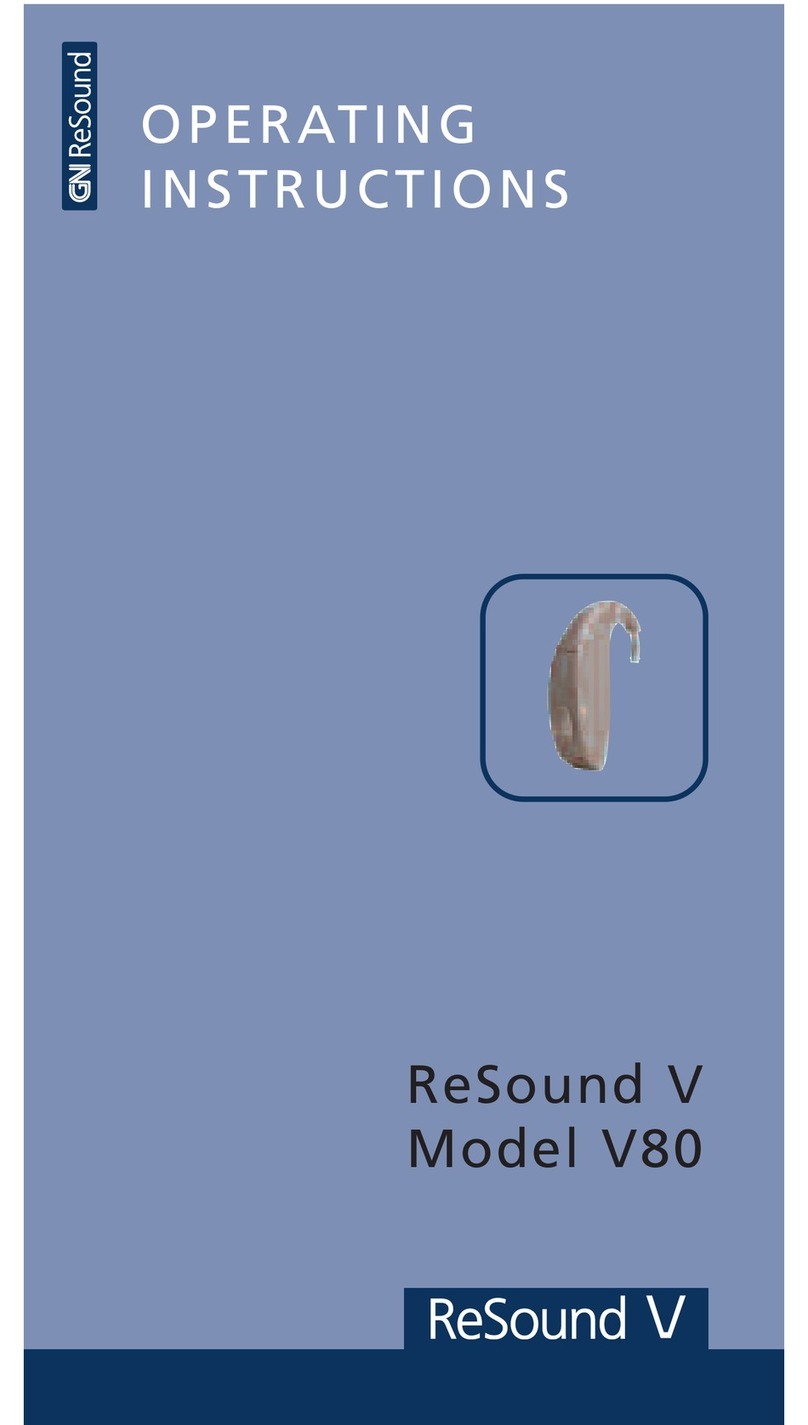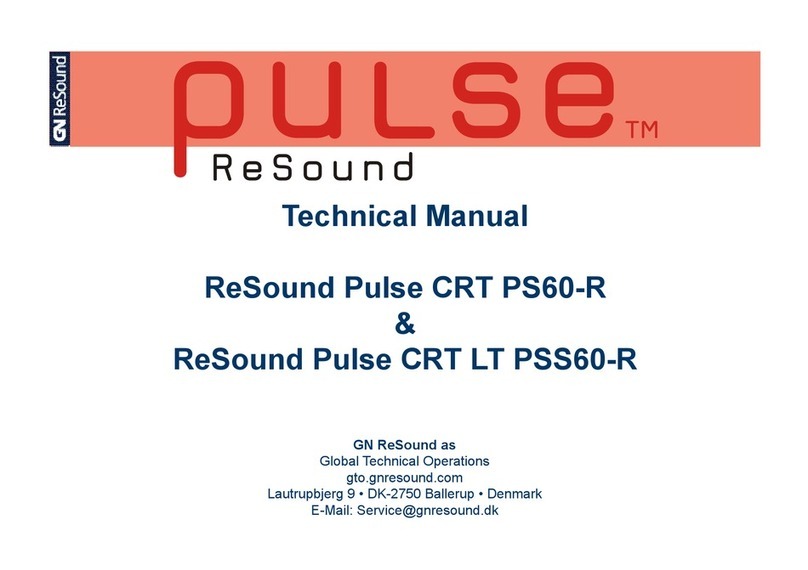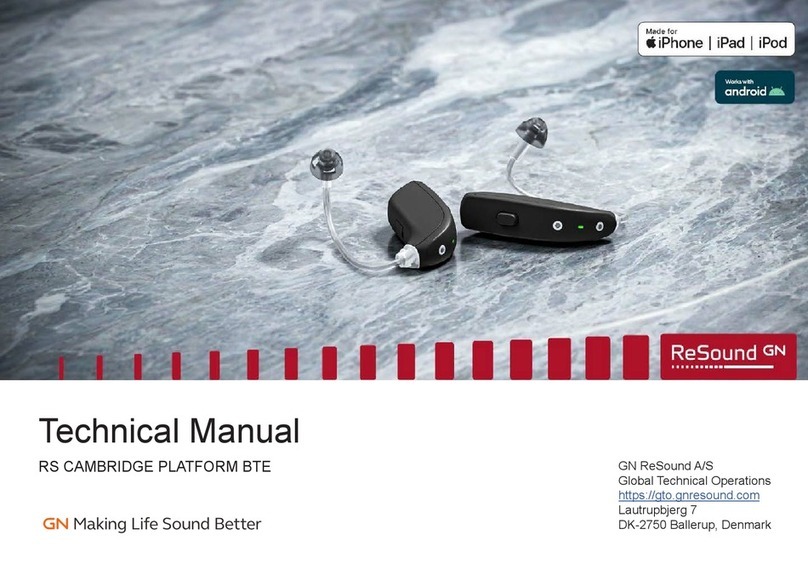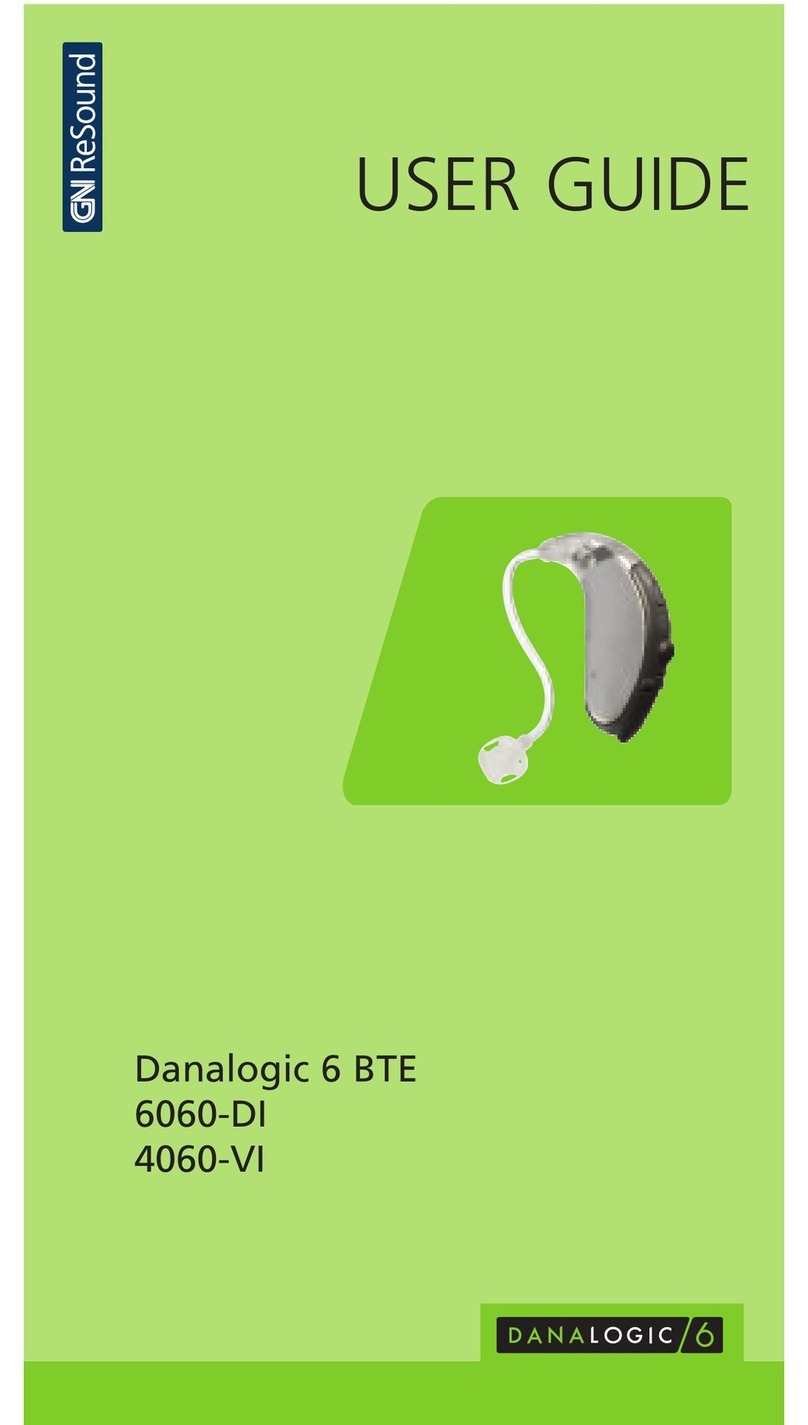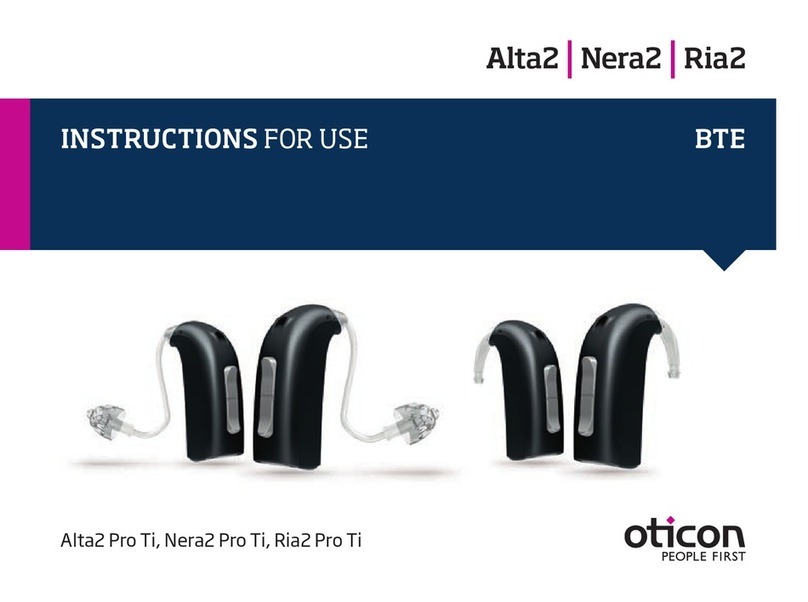
Preparing your hearing aids for use
Charging the hearing aids
NOTE: We recommend that you fully charge your hearing aids before using them.
Refer to the user guide for your hearing aid charger for a full instruction on how to use it.
Battery warnings
• Do not attempt to open the product or replace the battery. This terminates the warranty.
• The battery is built-in and cannot be replaced. Use of other batteries may present a risk of fire,
explosion, or chemical burn .Dispose of rechargeable product according to local regulations.
Please recycle when possible. Do not dispose the rechargeable product as household waste or
attempt to burn it as it may explode.
• Batteries are harmful to the environment. Therefore, never try to burn them – dispose of your
used batteries according to your country’s regulations or return them to your hearing care
professional.
Preparing your hearing aids for use 9
